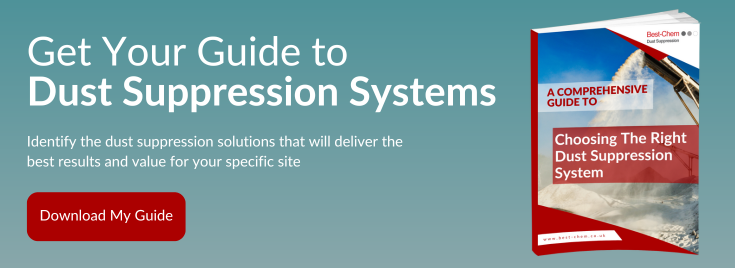
Dust Control: Understanding How Chemical Foam Suppression Systems Work
Dust is a common problem in bulk material handling industries like mining, manufacturing, and construction. While it was once considered ‘just a normal part of the job’, we now understand the full range of risks and hazards it presents. Chemical foam suppression systems are a modern solution, but what makes them so effective?
Why Foam Is A Better Choice?
Traditional dust suppression often relies on water, which works by clumping particles together and causing them to fall. However, this method has limitations. Some industries create very fine dust that water can't effectively capture. In other cases, sites may not have a reliable water supply, making large-scale spraying impractical and costly.
Foam solves these problems by maximising the surface area available to capture dust particles. This has two key benefits:
-
-
It drastically reduces the amount of water needed, making it an ideal solution for sites where water is scarce or as part of a sustainability strategy.
-
Its expansive properties are highly effective at capturing the fine, dangerous particulates that can escape traditional water systems.
-
Which Industries Can Benefit From Fixed Foam Systems?
Effective dust control is crucial in many industries, but it is particularly vital in bulk material handling operations where specific hazards are a major concern.
-
Mining and Quarrying: The main health risk is silicosis, an incurable and fatal lung condition caused by inhaling rock dust.
-
Coal Handling: The primary hazards are black lung disease and the significant risk of combustible dusts, which can lead to catastrophic explosions.
Why Do So Many Sites Opt For Foam Over Water?
There is a global shortage of water, and it is also becoming increasingly expensive. Additionally, contaminated water can create pollution problems. While water-based systems have their place, foam offers several distinct advantages:
-
Superior Effectiveness: Foam's wetting properties and larger surface area make it more efficient at suppressing dust.
-
Low Moisture Content: Foam adds only 0.2% to 0.4% water to the material, which is not enough to affect the product's quality or cause blockages in processing equipment.
-
Reduced Water Usage: This is not only environmentally responsible but also a major advantage in regions where water is expensive or scarce.
How Efficient Is Foam For Dust Reduction?
While the quality of any system is important, high-standard foam suppression systems are often a superior solution for specific applications. They can achieve up to 90% dust reduction while using up to 70% less water than traditional water sprays. This makes them particularly effective for industries where water conservation is a priority or where traditional water systems are not sufficient. While spraying and misting systems are excellent for general uses like dust and odor control, the low water usage and high efficiency of foam systems make them the ideal solution for many unique and challenging needs. Given the growing focus on sustainability and the increasing awareness of dust hazards, consulting with an experienced advisor can help you determine if a foam system is the right choice for your specific application.
What Next?
At Best-Chem, we always explore a range of options to find the most effective way to keep everyone safe. For more information about foam dust control or any other dust control strategy, please contact one of our specialists today.
Image source: Canva

